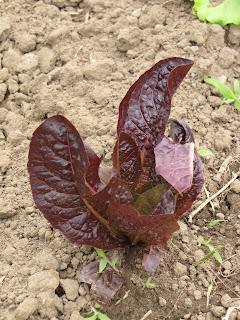My beautiful sister Esme was murdered on March 7th, 2009, in Cincinnati, at the age of 13. As you might expect, I have constant thoughts about her and many, many other things that touch on her life and death. Being a writer of sorts, I feel a need to write about them, and have been searching for a way to grapple with this event and the enormous repercussions it has had in my life and that of many others. It has been difficult to find an elegant way to do this, so screw elegance. I am just going to write stuff that is going through my head, in simply numbered thoughts, when I feel the courage to do so.
II I don’t believe there is any ultimate explanation for these kinds of events, or to the organization of reality. I don’t believe in any ultimate purpose or meaning to our existence. I don’t believe that there is any kind of method to this madness which will become clear to me at some point, perhaps upon my own death. The one thing that I have told myself and others again and again during this ordeal has been “it is what it is.” It is what it is. That’s all I can say, all I can see. Though I have been agnostic regarding god and the nature of things beyond what we can see for a long time, I am more doubtful than ever regarding the existence of any kind of conscious, intervening entity beyond the observable. If there is one, I am inclined right now to have nothing to do with him/her/it. I do respect those who have a different relationship and understanding of the world, but I don’t share it.
I don’t think this makes my life meaningless, however. If this makes me a relativist, then so be it, but I do think we can find our own morals, our own goodness, our own purpose in our lives, just as well as we can from traditional spiritual sources. I can look around me and recognize pain, suffering and cruelty, and see many of the things that contribute to these darker pieces of life. By chance, as I see it, the world has evolved in many different directions: toward the beautiful, the unbelievable, the complex, the simple, the frightening, the useless, the mysterious, the enormous, the small, the evil, the ugly, the good. I can see them and find my own way to the things that I hope will make the world a better place and relieve the suffering of some small number of others in the world.
III I have some conflicted feelings about any sort of good that might come from the event of my sister’s murder. Part of me doesn’t want to learn anything from it, and to retain my anger. I don’t want to become a stronger person because of this. I don’t want there to be any good that comes from this, This is all bad, all bad, all bad. You don’t want to ask what I would trade for the happy return of Esme; there might not be anything good left in the world but her smiling face.
But it’s just not true. In my heart, and in the part of me that most shares Esme’s open spirit of love, I do want that explosion of love and light my dad and stepmother talked about in their memorial statement to spread across the world. For myself, I want to be a better person, From Esme’s example, I want to become a braver person. I want to be less selfish with my time and get involved with other people’s lives and in my communities. I want to help others. I want to get involved in my own life and make things happen, make the decisions I need to. I don’t want to mess around any more. I know I’m not likely, nor do I want, to make my life into a saint’s, but I want to keep my eye on the things in life that are important, to me and to the communities that I can touch.












